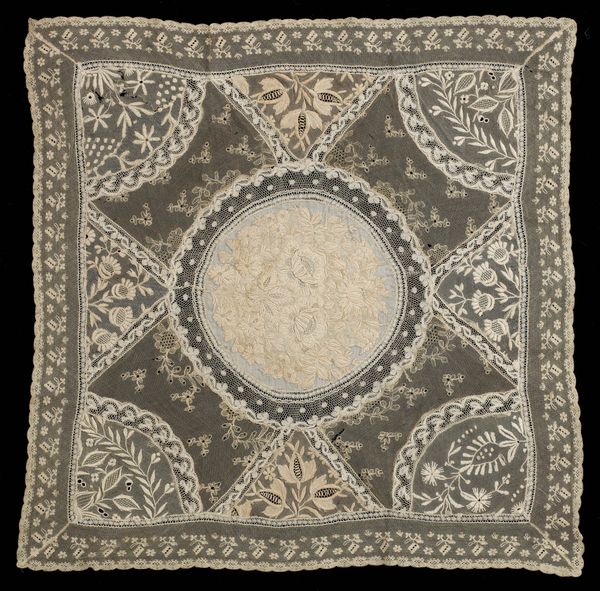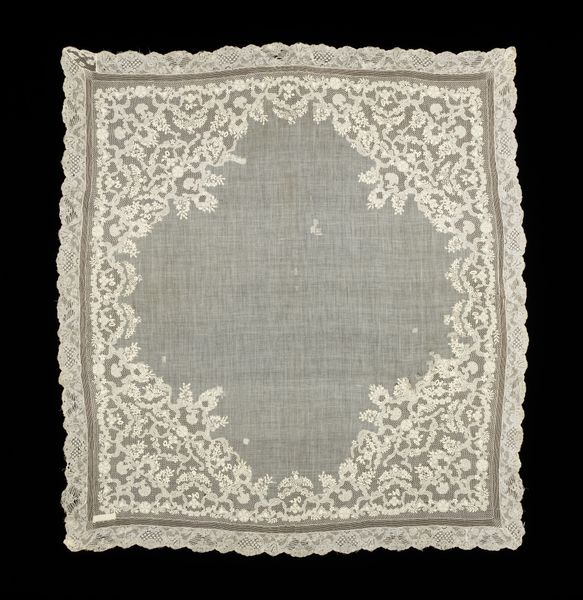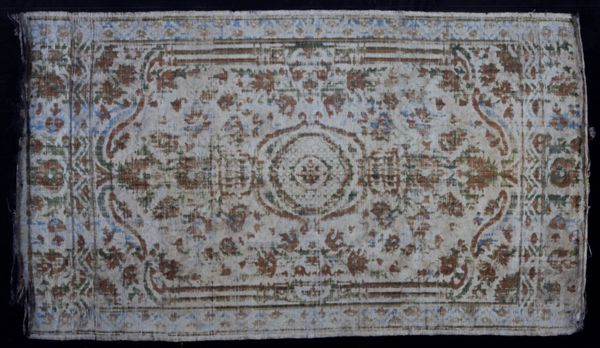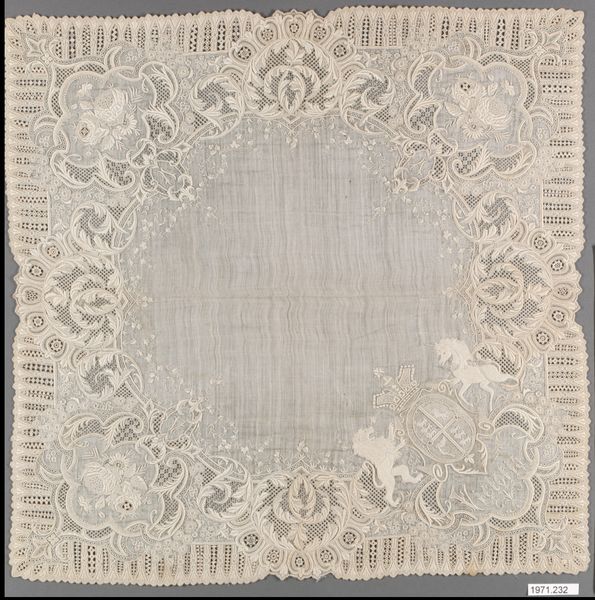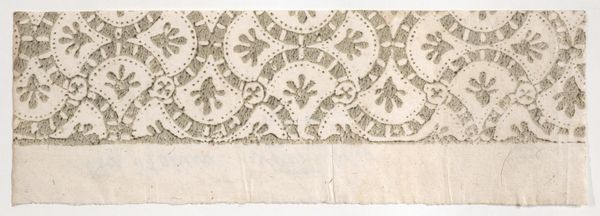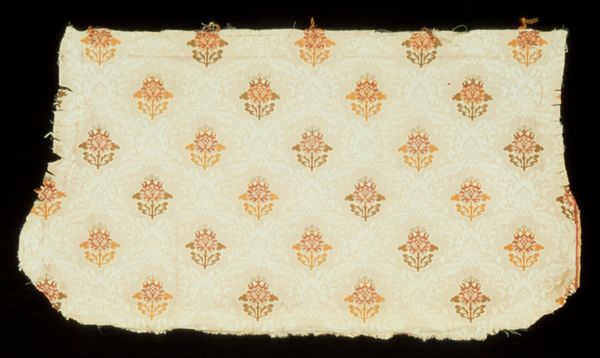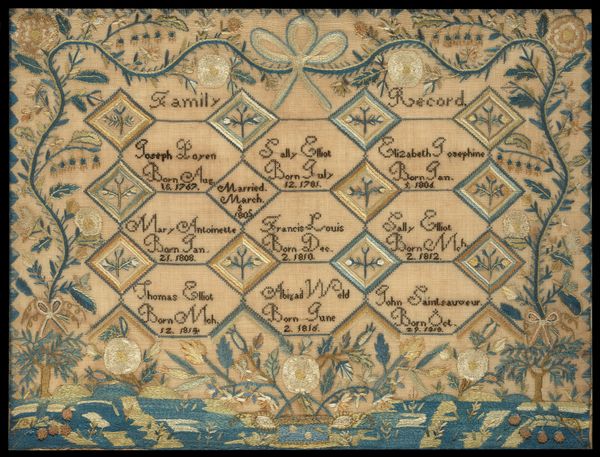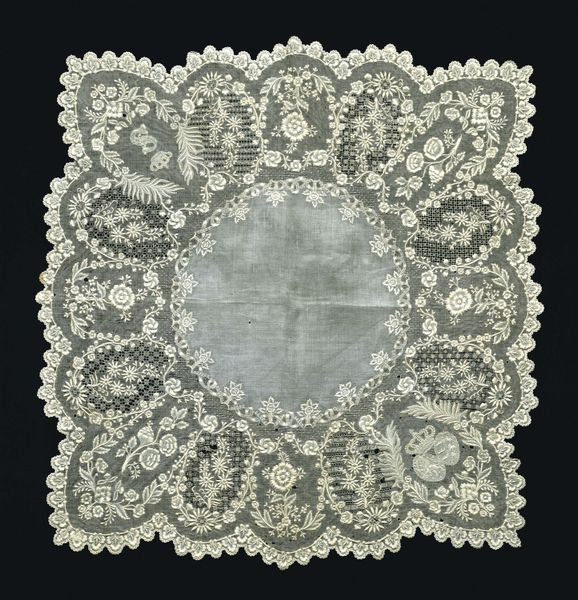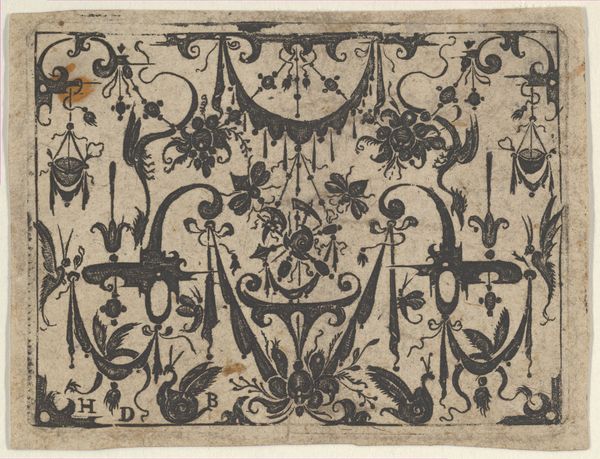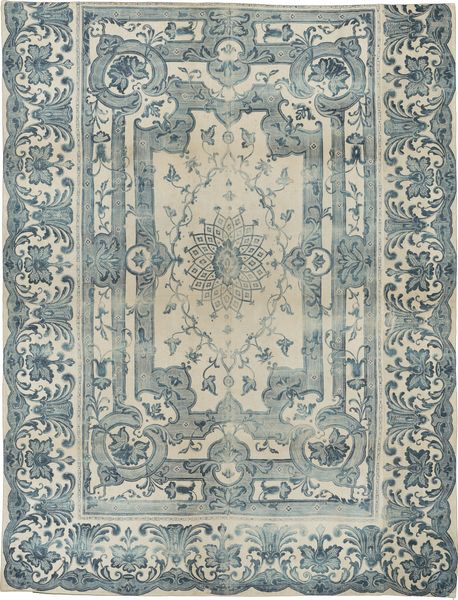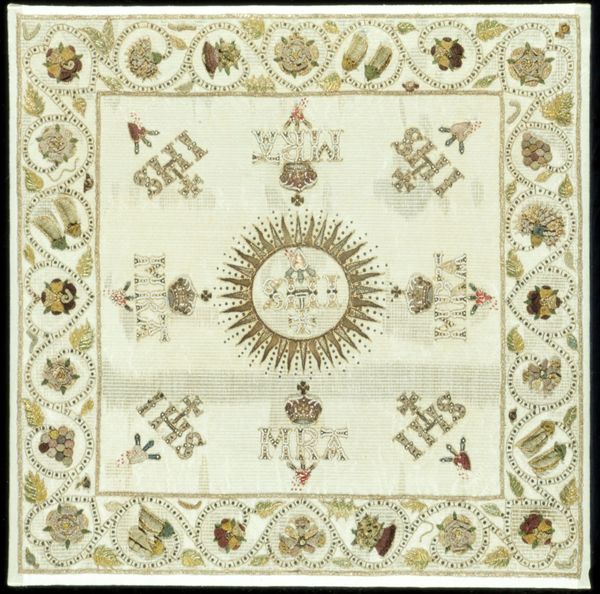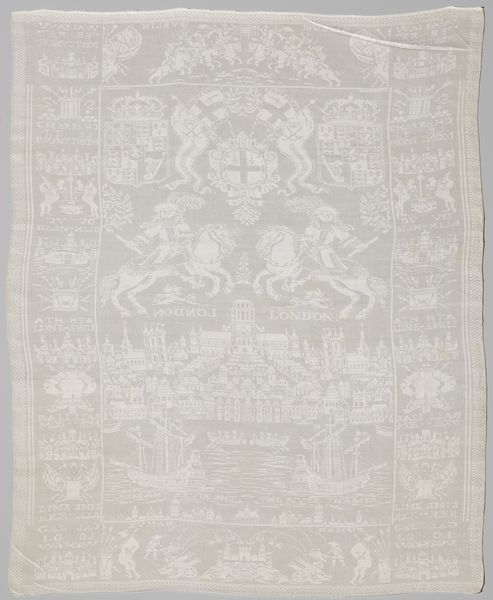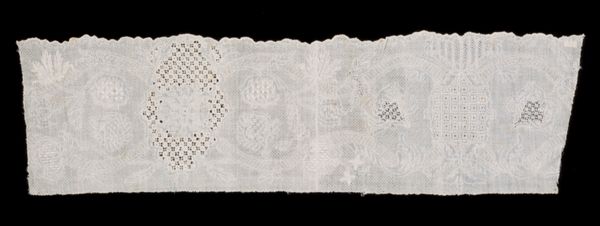
textile
#
pattern
#
textile
#
geometric pattern
#
geometric
#
decorative-art
Dimensions: 18 1/4 x 18 1/4 in. (46.36 x 46.36 cm)
Copyright: Public Domain
Curator: Just in front of us, we have a delicate lace pillowcover, estimated to be from the 19th century, currently held in the collection of the Minneapolis Institute of Art. Editor: It’s strikingly intricate. The density of the patternwork and the fine ruffled edge give it an ethereal quality. Almost dreamlike. Curator: Exactly. Let's consider the labour involved. Nineteenth-century lace production was intense, almost always involving women working for incredibly long hours to create these objects. This cover probably wasn't made by someone who would sleep on it. Editor: No, definitely not. Lace of this quality signifies status and privilege, showcasing wealth within the home. Its vulnerability becomes part of the point; such an intricate object required resources to protect. How was lace like this consumed or marketed during its time? Curator: By the 1800s, machine-made lace started appearing, meaning handmade lace gained additional value as a luxury item, especially bobbin lace like this, where threads are painstakingly intertwined using bobbins on a pillow. The designs would follow trends, like the floral and geometric motifs we see here, driven by elite taste. Editor: So its function extends beyond mere decoration; it’s visual rhetoric. This pillowcover tells us a lot about Victorian values and material aspirations. Also, I am curious, what is its afterlife inside museum, how it gains and transforms its values to appeal modern taste? Curator: I see it more as an echo of past skills and craftsmanship that is very relevant nowadays. Despite industrial advances, we keep admiring pieces made through intensive labor that machines cannot emulate. And, beyond fashion and the market, it embodies domesticity. Editor: Very true. Thinking of how many hours went into crafting this, and imagining the hands that worked on it—it shifts my perspective entirely. I would love to find out about those artisan women and how their history has shaped present realities. Curator: Precisely! Viewing something functional—a pillowcover—through that lens elevates our understanding and appreciation of it, recognizing the skills involved.
Comments
No comments
Be the first to comment and join the conversation on the ultimate creative platform.
